Lucky wedding traditions for your big day
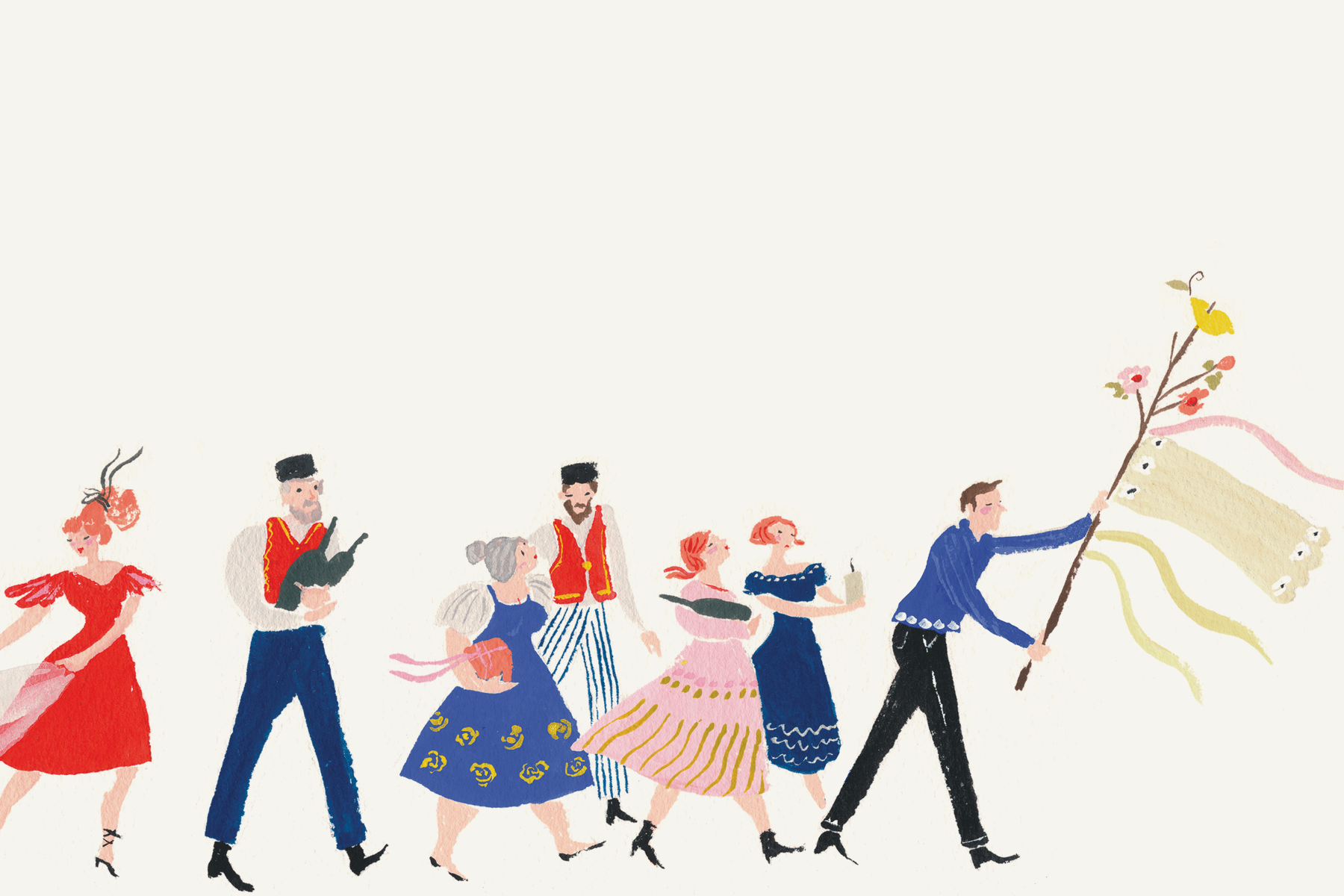
Stomping on a glass, tossing a bouquet, burying a bottle of bourbon—there are plenty of wedding traditions from around the world that go beyond heading to the chapel and clinking champagne flutes—plus many more for the bevy of bashes beforehand (like engagement parties, bridal showers and bachelorette weekends). In her latest book, “Lucky in Love”, author Eleni Gage breaks down how to use cultural customs to add meaning and personality (or just good vibes) to your big day. “Weddings are equal parts planning and magic,” says Eleni. “There are lots of books devoted to the planning; this one brings the magic.”
Eleni has always been fascinated with rituals—so much so that she majored in folklore and mythology in college. But it wasn’t until she spent three years as the executive editor of Martha Stewart Weddings that she dreamed up the idea for “Lucky in Love: Traditions, Customs & Rituals to Personalize Your Wedding.” She’d written and edited articles about hundreds of newlyweds, and found that most everyone wanted the same thing: “a one-of-a-kind, personalized wedding that’s “so us,” followed by a lifetime of happiness,” says Eleni. “But with so many people who don’t identify with their own religious or cultural tradition, or who are marrying across cultures, it can be really difficult to figure out what that looks like—how to plan a day that is deeply personal and feels sacred and special.” The idea is that you make your own luck, but here are some age-old customs to help you make your wedding a little more beautiful, meaningful and auspicious.
We caught up with Eleni to get her wisdom on the symbols and traditions (Bulgarian wedding march, or the plate-smashing German polterabend, anyone?) that will help your happily-ever-after, and—at the very least—jazz up your day.
Table of Contents
Can you add luck to your wedding date?
Of course you can––from hiring an astrologer to pick an auspicious date based on your birth charts, which is an Indian tradition (and if you don’t have a family astrologer, there’s an app for that) to marrying on a date that contains a lucky number, whether it’s eight in East Asia (because the word for eight sounds like the one for prosperity) or 18 in Judaism (because every Hebrew letter has a numerical value, and 8 and 10 stand for the letters that spell chai or “life”). The great thing about folklore is that there’s always a work-around. If your date is unlucky for whatever reason, you can get still married on the upswing of the clock (i.e., the half hour) which is said to lead to increasing joy.
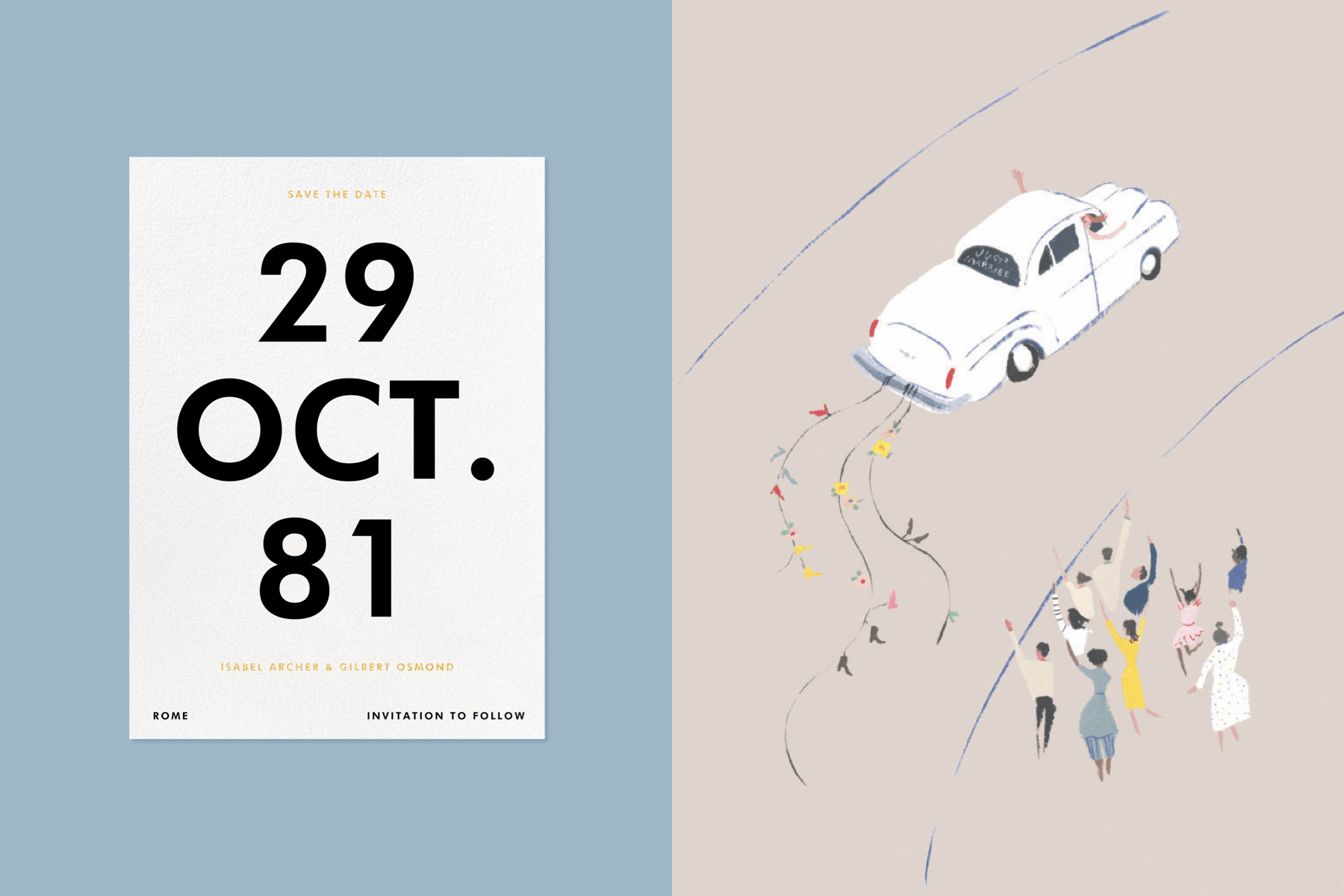 “Brand New Day” by Paperless Post. Illustration by Emily Isabella thanks to Penguin Random House.
“Brand New Day” by Paperless Post. Illustration by Emily Isabella thanks to Penguin Random House.
How do you find lucky symbols to add to your invitations?
One of the things I always say is if something is lucky for you, it counts as a lucky symbol. Your wedding invitations could have the Evil Eye (said to ward off bad vibes and jealous eyes), the Hamsa (a symbol of divine protection), or a Tree of Life on it, and chances are others will know the symbolism. Or you could go culturally specific—the dragon and the phoenix are groom and bride avatars in China, for example. But if you fell in love in Chicago, your stationery could have the Willis Tower on it, and that’s a lucky symbol for you two. Or if you met in line for the ice cream truck and you’re having a fairly casual wedding, you might have ice cream cones—they’re lucky because they brought you together.
There are so many parties before the party! Can you tell about how these traditions started and what role they play?
There aren’t enough reasons to celebrate in this world—when you throw a party (or let people host one for you), you’re sharing your luck and love. And I really feel both luck and love multiply when they’re shared. Think of it that way rather than worrying about being the center of attention. Personally, I think you should party from the minute you announce your engagement all the way through the reception—and after!
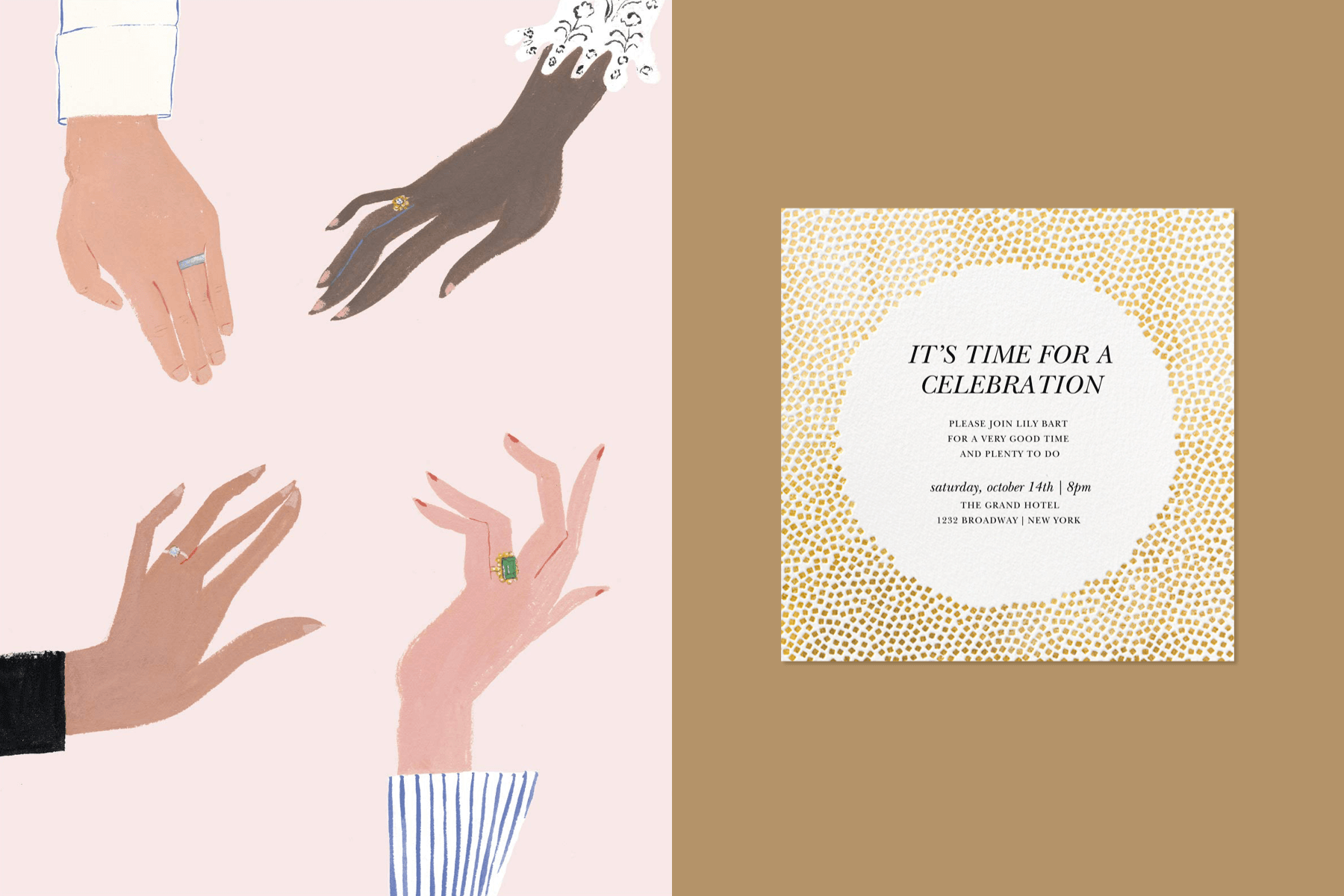 Illustration by Emily Isabella thanks to Penguin Random House. “Konfetti” by Kelly Wearstler.
Illustration by Emily Isabella thanks to Penguin Random House. “Konfetti” by Kelly Wearstler.
The first bridal shower is said to have taken place in 17th-century Holland when a man refused to give his daughter a dowry because he disapproved of the poor miller she wanted to marry, and the village rallied around and brought her gifts to set up her new home. The first bachelor party was in ancient Sparta, to send the groom off to a fortunate future. But those are not the only options! You can make music together like in the Muslim dholki, which means drum, where the couple’s family and friends sing, dance, and feast; the same happens at the sangeet Indian couples enjoy (the name comes from the Sanskrit word for music). Or you could have some sort of spa-bonding event, inspired by mehndi, the henna designs painted on brides and their female friends and relatives in South Asia, the Middle East, and among Sephardic Jews. Any of these traditions—or the others in the book—can serve as inspiration.
Are there any lucky rituals to consider using for the wedding ceremony or reception itself?
In the book, I break down the six elements I feel most weddings have—a processional, a unity ritual, a transition ritual, a promise ritual, the signing of a legal contract, and a recessional. You can choose to do one, some or all of those and there are so many options for fulfilling the categories.
My favorite unity rituals are the ones that involve sharing food or wine—the common cup of wine the couple drinks during a Jewish or Orthodox Christian ceremony, or the sake shared by Buddhist couples in the san-san kudo ritual. But there are so many non-food unity rituals as well, including those that bind the couple together physically, from Celtic handfasting to the Latin lazo ritual to wrapping the pair in a tei fa fa, a special wedding quilt made for Polynesian weddings. And that’s just one category of ritual out of six!
What are a few of your favorite lucky flowers?
Peonies. They’re my favorite. (I know, me and every other girl.) Until I wrote this book, I didn’t realize that they have been a symbol of marital love since Victorian times. They’re also embroidered on the bride’s ensemble in China, where they symbolize prosperity, and are part of the wedding table display in Korea, where they’re associated with marital happiness.
Orange blossoms. All fruiting trees are fertility symbols, but these beautiful blooms are especially sacred—in Chinese, Indian, Persian and many European cultures—because they often produce both a fruit and a flower at the same time. Plus, they smell like heaven. Queen Victoria wore an orange blossom crown at her wedding in 1840—and she could have had the real thing if she’d wanted!
Tiare flowers. A type of Tahitian gardenia, these are incorporated into the wedding leis of Tahitian brides. They, too, smell like heaven—or, to be more specific, like a honeymoon destination full of overwater bungalows.
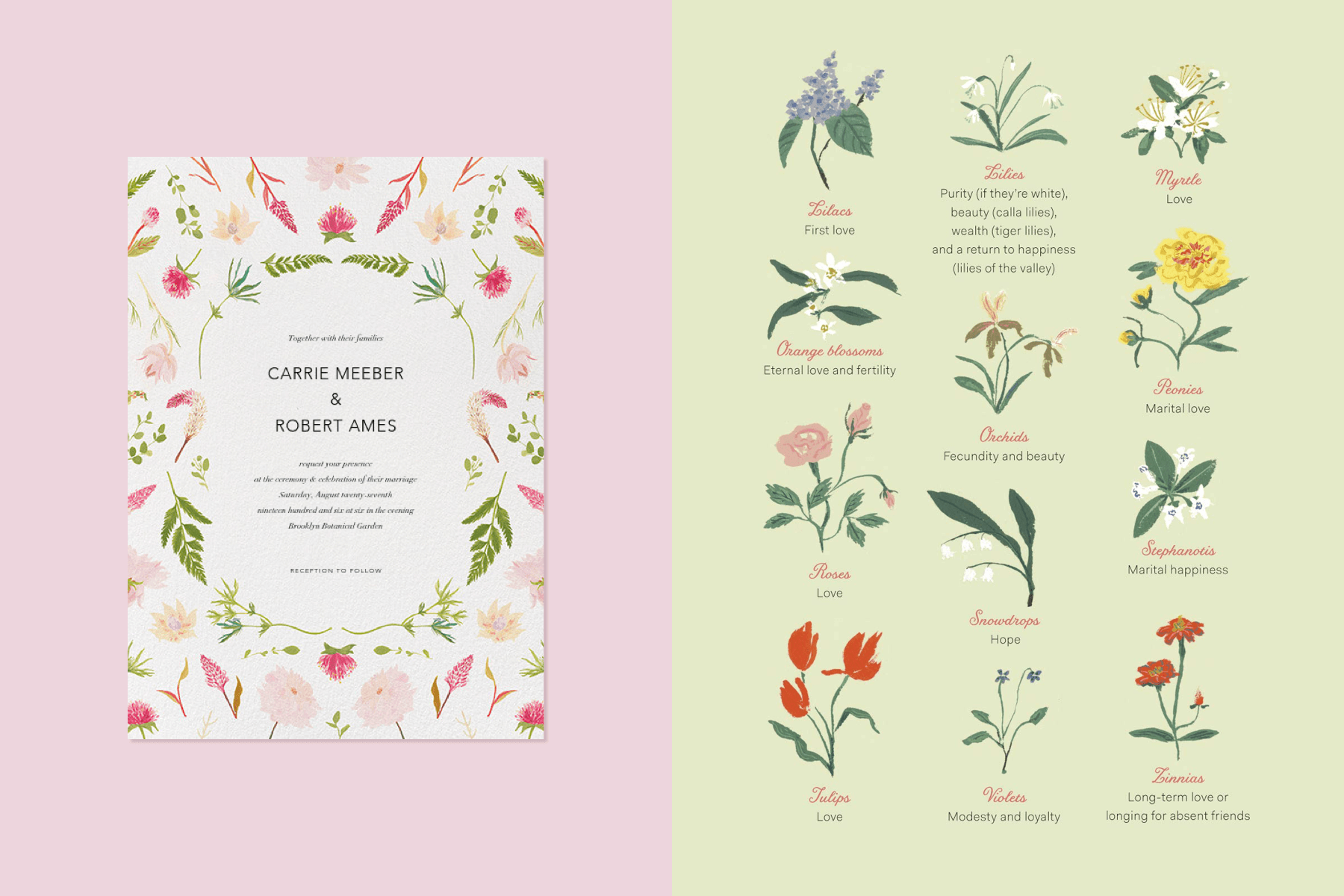 “Fleurs de Printemps” by Paperless Post. Illustration by Emily Isabella thanks to Penguin Random House.
“Fleurs de Printemps” by Paperless Post. Illustration by Emily Isabella thanks to Penguin Random House.
And what about your favorite lucky colors?
Red. It’s the color of luck and wealth in China, where it’s said to drive away evil spirits, and Chinese brides traditionally wear red. So do many Indian brides, as the color is associated with the goddess Durga, the rising sun, love, and fertility in India. Plus, it’s such an attention-grabber!
Blue. Long associated with fidelity, blue plays a significant role in wedding folklore. In Biblical times, Jewish brides had blue ribbons sewn onto their wedding dresses to show loyalty, and in ecclesiastical art the Virgin Mary is often shown wearing blue, to call to mind heaven (and because it was the most expensive paint, made with lapis lazuli).
Celadon. It’s my eight-year-old daughter’s current favorite color (I suspect she thinks it sounds fancy). But it’s also a calming shade in feng shui, and, for that reason, is often one of the colors of the traditional wonsam Korean brides wear. It’s also the color of some jade jewelry, which is considered auspicious for Asian brides to wear.
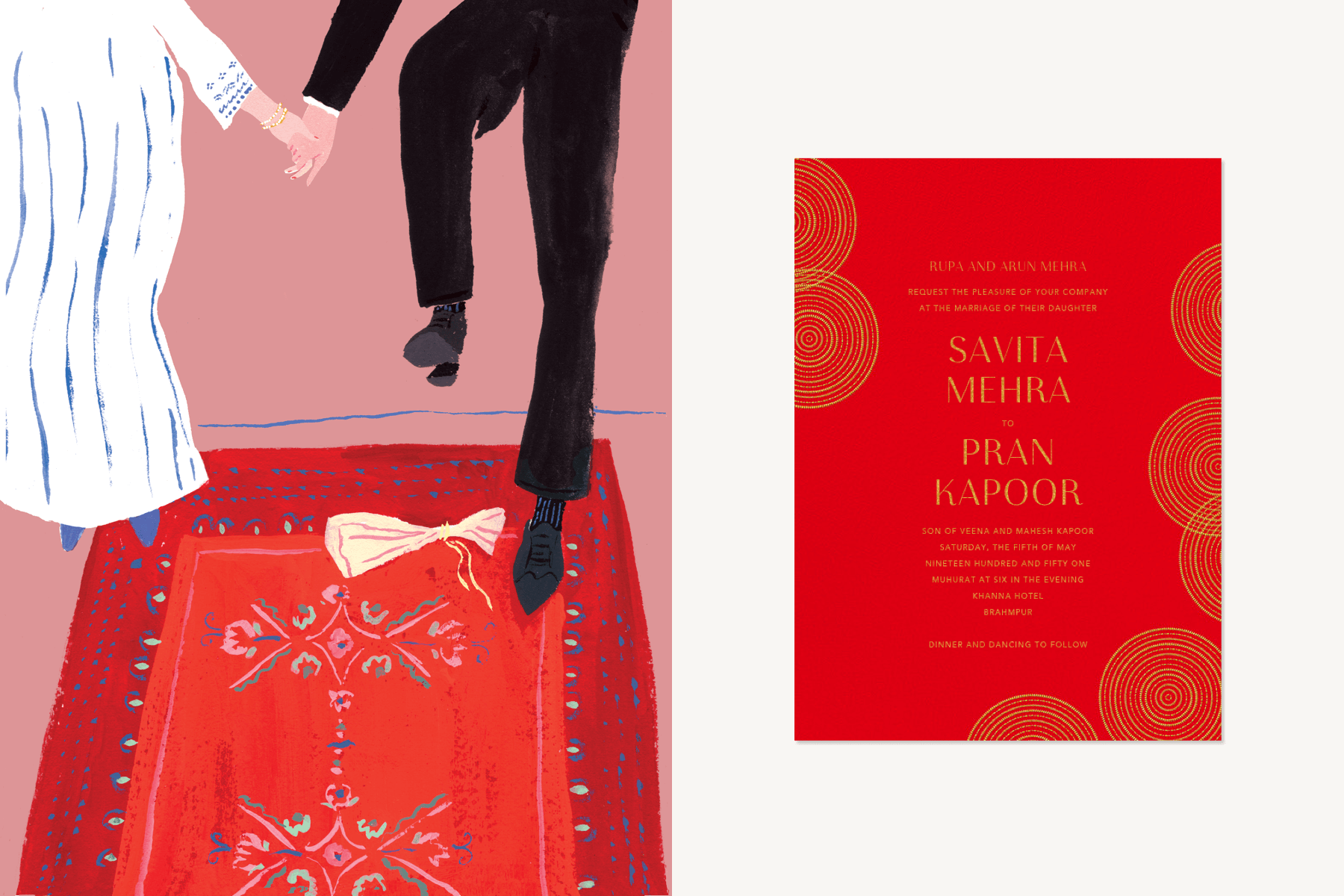 Illustration by Emily Isabella thanks to Penguin Random House. “Ghera I” by Paperless Post.
Illustration by Emily Isabella thanks to Penguin Random House. “Ghera I” by Paperless Post.
Set a special day, land on a lucky icon for your invitation suite, or choose a cultural tradition for the ceremony itself—no matter where you are in your planning process, we’d say the odds of a stylish, meaningful big day are in your favor.
Feeling lucky? Shop our invites for save-the-dates, showers, and weddings.
